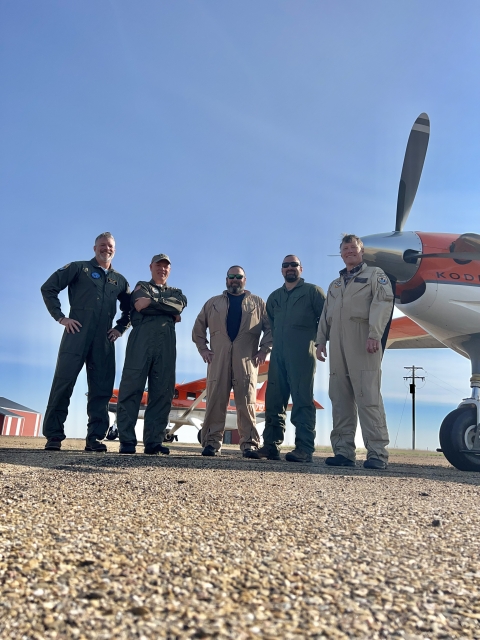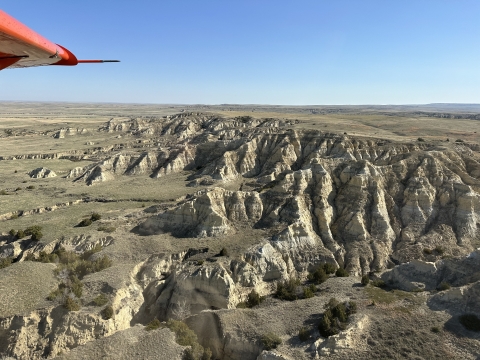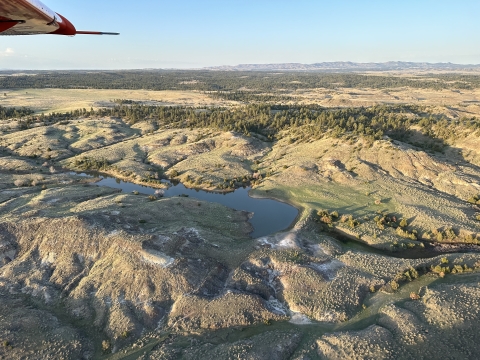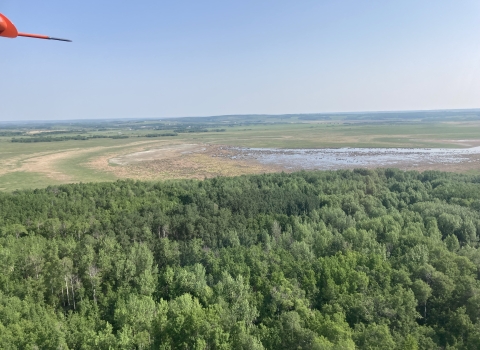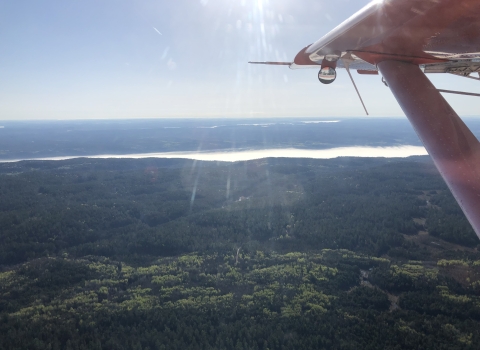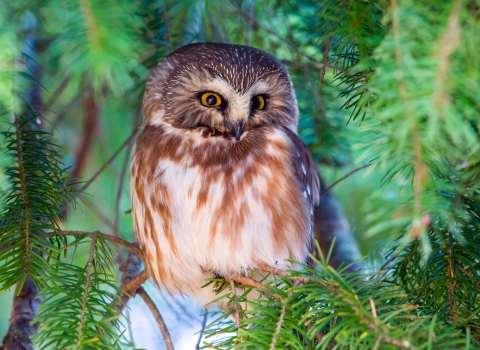This year Stephen Barlow is joining Stephen Chandler and myself for the Montana portion of the waterfowl survey to gain more experience with duck identification, survey protocol, and surveying logistics. We started making our plans and organizing the logistics about two weeks before we departed. We formed a “Plan A” and a “Plan B” for how the aerial crew would fly the transects and also coordinate those flights with the ground crew.
We quickly had to implement Plan B once the weather models I’d been checking for weeks started showing that rain and snow would move into western and central Montana. Instead of just getting to Baker, MT on day one, I decided to fly a transect line on the way. We made use of the first full survey day by covering western segments of the transects where weather was forecast to move in and stay for several days. Each day we’d go to sleep thinking we’d have a no-fly day due to poor flying weather and each morning I’d wake up at 4:30am to find the actual weather was not as bad as the evening forecast had predicted, a nice surprise!
Montana is an interesting crew area – not one of the duckiest places compared to my normal survey area in Saskatchewan, but it does have some good waterfowl habitat. And when we weren’t seeing water or ducks, the state has lots of gorgeous scenery to distract us from some of those long stretches without seeing ducks. Much of the Missouri Breaks region hasn’t changed since Lewis and Clark came through the area in 1805 and it is spectacular to flyover. Plus, some of the survey lines end at snow covered mountains – there are few people who get to see this scenery and I’m one of the lucky ones.
Montana appeared to be in better condition than in 2022. The poor areas in eastern Montana that I flew in 2022 have improved. Wetlands were full of water and stock ponds were half to three quarters full. Areas south of the Missouri River to about the latitude of Sidney, Montana had big improvements in waterfowl habitat from last year and benefitted from late snow and rain. Much of the water should last long enough for brood rearing and fledging so I’d expect fair production for much of the southeast part of the state with areas along the Missouri River having the potential for good recruitment.


